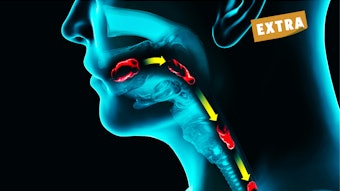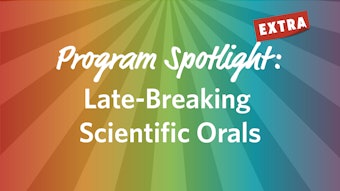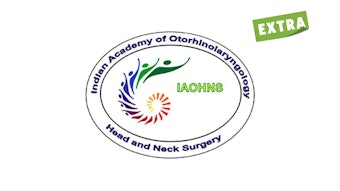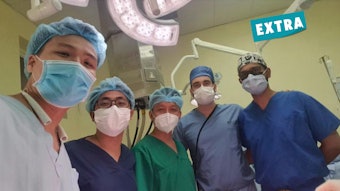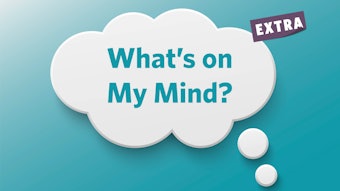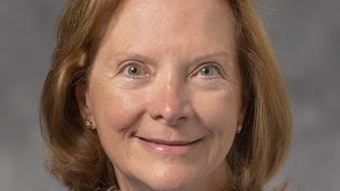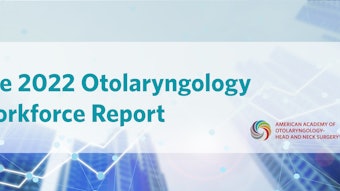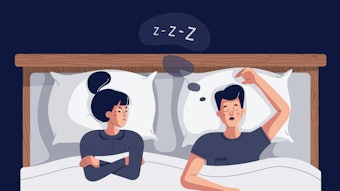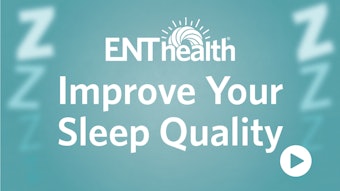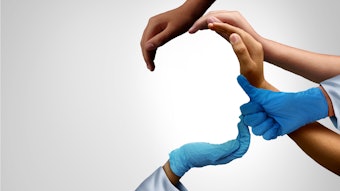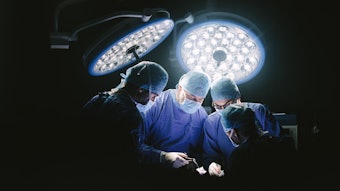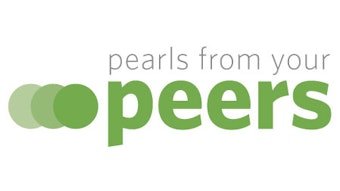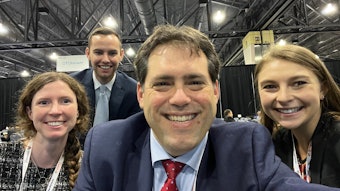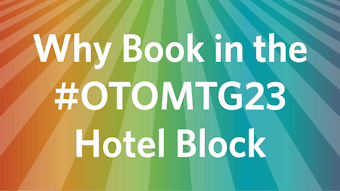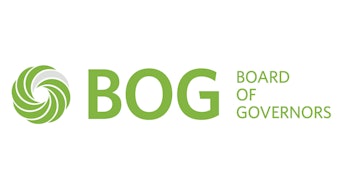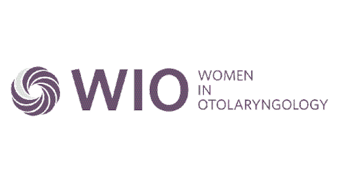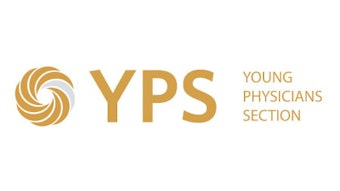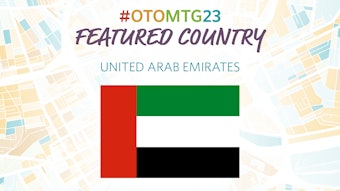Are Your Sleep Apnea Patients Losing Sleep over Their Sleep?
Recognizing the causes, symptoms, and potential consequences of orthosomnia is crucial in addressing this sleep disorder.
Ahmed A. Al-Sayed, MBBS, MTM, FRCSC, Vikram Padhye, MD, PhD, and Robson Capasso, MD
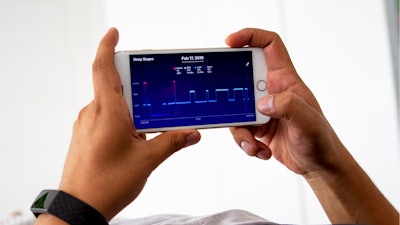
In today’s fast-paced and technology-driven world, the importance of a good night’s sleep is increasingly emphasized. Sleep plays a vital role in our overall well-being, affecting our physical health, mental clarity, and emotional resilience. As a result, many individuals have become conscious of their sleep quality and seek ways to optimize it. However, in the quest for perfect sleep, a new phenomenon has emerged, known as orthosomnia.
Orthosomnia, a term coined by researchers, combines “ortho” (meaning correct or straight) and “insomnia” (the inability to sleep). It refers to a condition in which individuals become fixated on tracking and optimizing their sleep using various digital sleep-tracking technologies, ultimately leading to increased sleep-related anxiety and disruption.1
The rise of wearable devices, smartphone applications, and other sleep-tracking technologies has provided people with unprecedented access to information about their sleep patterns. These tools promise valuable insights into sleep duration, quality, and disturbances, aiming to help individuals make informed decisions to enhance their sleep habits. However, for some, this pursuit of perfect sleep can take a problematic turn.
Orthosomnia occurs when individuals become excessively reliant on sleep trackers and place too much importance on achieving idealized sleep metrics. They may obsess about achieving a specific number of hours of sleep, striving for an ideal sleep score, or fixate on eliminating every sleep disturbance recorded by their devices. This hyperfocus on achieving “perfect” sleep can create a paradoxical situation whereby the pursuit of better sleep becomes a source of anxiety, leading to sleep disruption and dissatisfaction.
Although the phenomenon of orthosomnia is relatively new, researchers and sleep experts are beginning to recognize its potential impact on individuals’ well-being. By highlighting this issue, they aim to foster a better understanding of the potential risks associated with overreliance on sleep-tracking technologies and promote a balanced approach to sleep optimization.
In this exploration of orthosomnia, we will delve into the causes, symptoms, potential consequences of this sleep disorder, and how it relates to sleep apnea. We will also discuss strategies for the management of coexistent orthosomnia and sleep apnea.
As our world becomes increasingly interconnected and our fascination with optimizing every aspect of life persists, it is essential to recognize the potential downsides that may accompany the quest for perfect sleep. By finding a middle ground between using sleep-tracking technology and nurturing a holistic approach to sleep, we can work toward a healthier and more balanced relationship with our sleep patterns.
Sleep trackers are devices or applications designed to monitor and analyze an individual’s sleep patterns, aiming to provide insights into sleep quality and help improve overall sleep health. The most common types of sleep trackers currently available are:
Wearable devices: Many sleep trackers are integrated into wearable devices like fitness trackers, smartwatches, or dedicated sleep-tracking bands. These devices typically use sensors, such as accelerometers and heart rate monitors, to gather data on movement, heart rate, and other physiological parameters during sleep.
Nearables or bedside devices: Some sleep trackers are stand-alone devices that you place on your bedside table or under/in your mattress. They often use under-bed sensors or microphone-based technology to track movement, breathing patterns, body temperature, snoring, and ambient noise levels during sleep.
Smartphone applications: Numerous mobile applications are available for both iOS and Android platforms that track sleep patterns. These apps use the smartphone’s built-in sensors, primarily the accelerometer, to record movement and estimate sleep quality.
Smart home integration: Sleep tracking is increasingly being integrated into smart home systems. For instance, certain smart mattresses or mattress toppers are equipped with sleep-tracking technology. They use sensors within the bedding to monitor sleep quality and provide personalized recommendations.
Sleep-tracking devices for children: Sleep trackers specifically designed for children are gaining popularity. These devices typically feature child-friendly designs, such as wearable wristbands or smart nightlights, and focus on monitoring sleep duration and quality to help parents ensure their child’s healthy sleep habits.
The causes of orthosomnia can be attributed to the prevalence of sleep-tracking technology, information overload on sleep optimization, and the pressure of perfectionism and performance. Symptoms of orthosomnia include obsessive monitoring of sleep data, experiencing sleep anxiety, and being in a state of sleep-related hyperarousal. Individuals with orthosomnia tend to excessively monitor their sleep metrics, become preoccupied with achieving perfect sleep, and may experience heightened anxiety about sleep quality and disruptions. This preoccupation can trigger a state of hyperarousal, making it challenging for individuals to relax and achieve restful sleep.2
The potential consequences of orthosomnia can be significant. Sleep disruption is a paradoxical outcome, as the obsession with achieving perfect sleep can lead to increased sleep disturbances. Orthosomnia can also have a negative psychological impact, contributing to stress, frustration, and feelings of inadequacy. Daytime impairment, including excessive sleepiness, fatigue, difficulties with concentration, and mood disturbances, can result from disrupted sleep. Orthosomnia may also reinforce unhealthy sleep beliefs and behaviors, such as rigid sleep routines or unnecessary reliance on sleep aids.3 Ultimately, the enjoyment and relaxation typically associated with sleep can be diminished as the focus on optimizing sleep metrics overshadows the true purpose of sleep.
Recognizing the causes, symptoms, and potential consequences of orthosomnia is crucial in addressing this sleep disorder. Striving for a balanced approach to sleep tracking and optimization can help individuals develop a healthier relationship with their sleep patterns and overall well-being. Moreover, recognizing the potential relationship between orthosomnia and sleep apnea can help individuals and healthcare providers navigate the complexities of sleep-related concerns and ensure appropriate diagnosis and management of each condition.
Although orthosomnia and sleep apnea are distinct conditions, they can sometimes be related in the following ways:
Misinterpretation of sleep apnea symptoms: Individuals with orthosomnia may misinterpret certain sleep apnea symptoms as indications of poor sleep quality rather than a separate sleep disorder. For example, they may focus on the number of awakenings recorded by their sleep trackers and attribute them solely to sleep disturbances, overlooking the possibility of underlying sleep apnea.
Overlapping symptoms: Both orthosomnia and sleep apnea can result in disrupted sleep patterns, excessive daytime sleepiness, and fatigue. These overlapping symptoms can further complicate the identification of the specific sleep issue experienced by an individual.
Impact on sleep quality: In some cases, the anxiety and hyperarousal associated with orthosomnia can exacerbate sleep apnea symptoms.4 The increased stress and vigilance about achieving perfect sleep can potentially worsen the sleep apnea-related breathing disruptions and contribute to a negative cycle of sleep disturbance.
It is important to note that while orthosomnia and sleep apnea may coexist or influence each other in certain cases, the diagnosis and management of these conditions require different approaches. Counseling patients who have both orthosomnia and sleep apnea is of paramount importance.
When counseling patients who have both orthosomnia and sleep apnea, it is important to provide education about the distinct nature of each condition. Begin by explaining that orthosomnia is driven by an excessive focus on achieving perfect sleep metrics, while sleep apnea is a separate sleep disorder characterized by breathing interruptions during sleep. Help the patient understand the symptoms, causes, and potential consequences of both conditions. Here are some strategies:
Clarify the interplay: Discuss how orthosomnia and sleep apnea can interact and influence each other. Emphasize that addressing sleep apnea, which involves treating the underlying breathing disturbances, is crucial for improving sleep quality and overall well-being. Help the patient recognize that excessive anxiety and hyperarousal related to orthosomnia can potentially worsen sleep apnea symptoms and that managing orthosomnia can support better sleep health.
Encourage comprehensive evaluation: Advise the patient to undergo a comprehensive evaluation to accurately diagnose and evaluate the severity of sleep apnea. This may involve an overnight sleep study, which can provide valuable information about breathing patterns, oxygen levels, and the presence of other sleep disorders. Explain that a proper diagnosis is essential for developing an appropriate treatment plan.
Emphasize treatment for sleep apnea: Discuss the various treatment options for sleep apnea, such as continuous positive airway pressure (CPAP) therapy, oral appliances, positional therapy, or surgical interventions. Emphasize the importance of adherence to treatment, as effectively managing sleep apnea can alleviate breathing interruptions, improve sleep quality, and reduce associated symptoms.
Address orthosomnia concerns: Explore the patient’s anxieties and concerns related to achieving perfect sleep. Explain that the focus should shift from fixating on sleep metrics to prioritizing overall sleep health and well-being. Encourage the patient to adopt a balanced approach to sleep tracking and optimization, promoting relaxation techniques, establishing consistent sleep routines, and creating a conducive sleep environment.
Psychological support: Recognize the potential psychological impact of orthosomnia and the challenges associated with managing both conditions simultaneously. Offer psychological support or referral to a mental health professional if needed. Cognitive-behavioral therapy for insomnia (CBT-I) techniques may be beneficial in addressing sleep-related anxiety and developing healthy sleep habits.
Ongoing monitoring and follow-up: Establish a plan for ongoing monitoring and follow-up to assess the patient’s progress. Regularly review sleep apnea treatment adherence, address any concerns or difficulties with sleep equipment, and evaluate the impact of counseling interventions on orthosomnia symptoms. Encourage open communication and provide support throughout the patient’s journey.
Collaborating with a multidisciplinary team, including sleep specialists, psychologists, and other healthcare professionals, can be valuable in providing comprehensive care for patients with both orthosomnia and sleep apnea. Each patient’s treatment plan should be personalized, taking into account their specific needs, preferences, and the severity of their conditions.
References
- Baron KG, Abbott S, Jao N, Manalo N, Mullen R. Orthosomnia: are some patients taking the quantified self too far? J Clin Sleep Med. 2017 Feb 15;13(2):351-354. doi: 10.5664/jcsm.6472
- Jahrami H, Trabelsi K, Vitiello MV, BaHammam AS. The tale of orthosomnia: I am so good at sleeping that I can do it with my eyes closed and my fitness tracker on me. Nat Sci Sleep. 2023 Dec;31:13-15. doi: 10.2147/NSS.S402694
- Trabelsi K, BaHammam AS, Chtourou H, Jahrami H, Vitiello MV. The good, the bad, and the ugly of consumer sleep technologies use among athletes: a call for action. J Sport Health Sci. 2023 Mar 1. doi: 10.1016/j.jshs.2023.02.005
- Barley BK, Walter C, Orselli P, Scullin MK. Rapid sleep education: If you could tell people one thing about sleep, what should it be? J Sleep Res. 2022 Nov3. doi: 10.1111/jsr.13765
